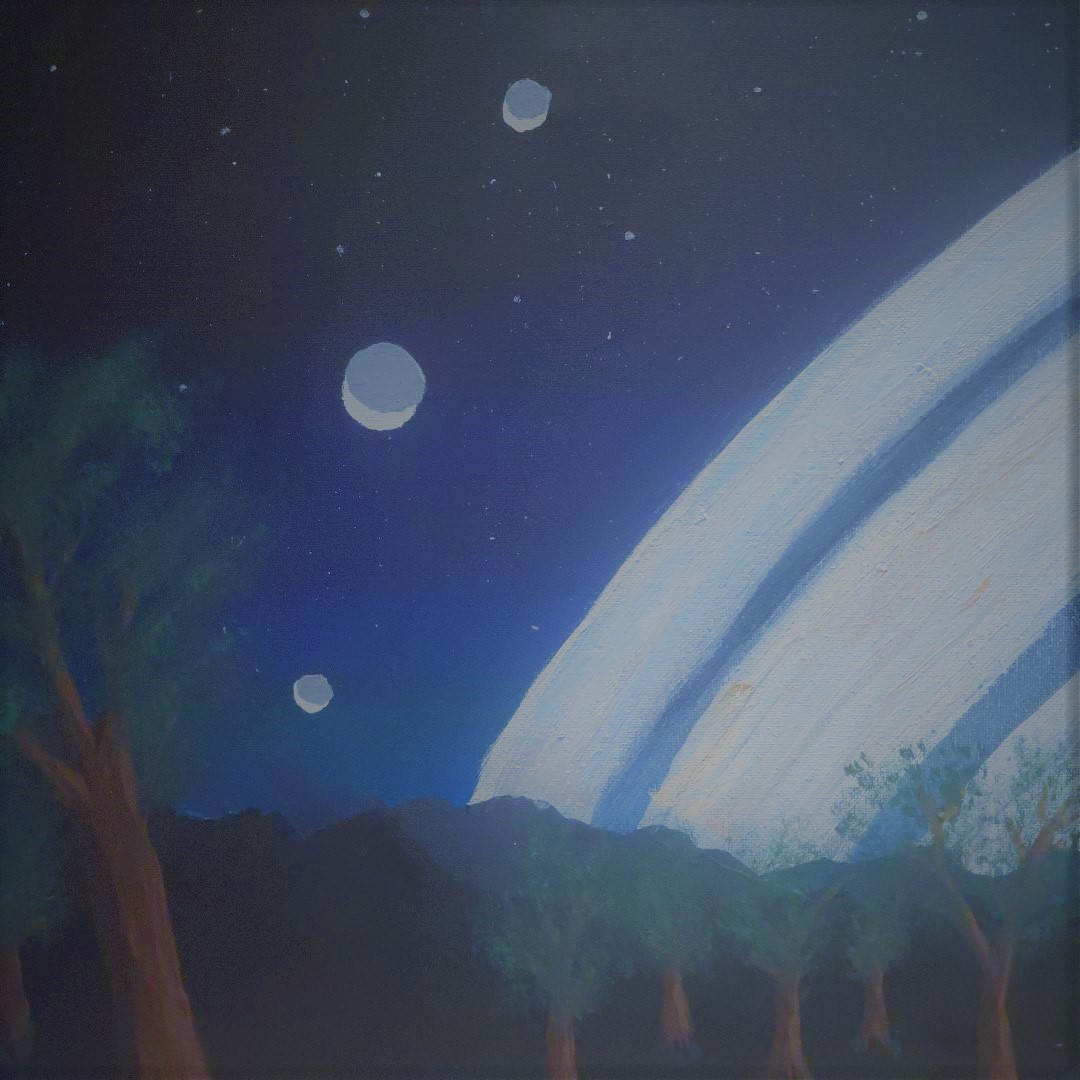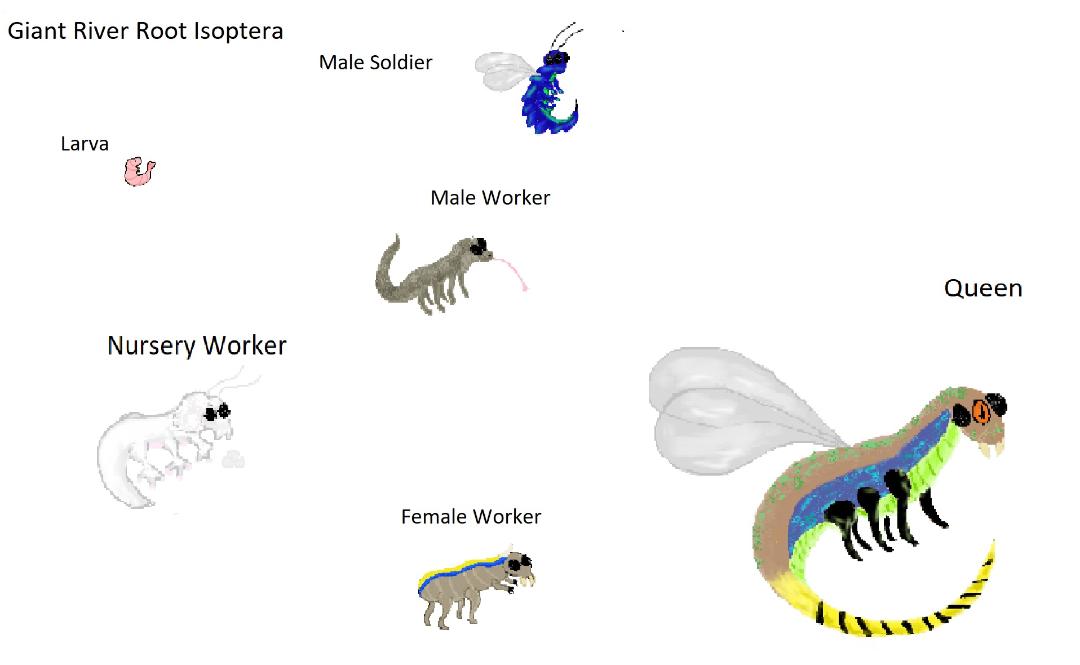Giant River root Isoptera
Giant River root Isoptera – (Isourodurptera) Often called an isopteran or a winged isoptera. This creature is part insect and part amphibian. Wasp, frog, salamander and termite all share traits with this creature. Various life cycle stages determine what it looks like as well as its gender and role in the colony. All start life in a tended egg nursery deep underground near a river bank and giant tree. The giant tree is hollowed out and kept alive and thriving but serves as an aerial entrance to the hive. Two other entrances, one on the earthy riverbank and another under the water in the river serve the colony. Larva stage – often located near the egg nursery of the hive is a soupy pool with a small water supply that flows from the river. As the eggs hatch a shrimplike maggot moves into the water. It begins to feed on other insects and other larva and grows. This is when gender, role and traits become apparent. All males begin to grow shells and a hard exoskeleton. Females will shed the soft shrimplike shell and develop a soft amphibious skin. Two males exist, the soldier and the worker. The soldier begins to develop large gossamer wings as it makes its way out of the water and begins a trek up into the hollow tree trunk. The other develops a large salamander like tail and continues deeper into the waters of the hive that’s in under water. Both are hunters and bring back food to the hive in the form of small birds, fish and other small animals. Both have a stinger. The water version has the stinger located near the base of the tail near the body. The flier has a stinger located at the end of the abdomen like a wasp. Both have six insect like legs and the aquatic version has gray brown exoskeleton and the flyer has a blue greenish shiny exoskeleton. Both have bulbous eyes on a tiny head. The eyes have characteristics of both an insectoid eye with a larger central eye that faces forward. Females have three varieties, the first two are workers and both are ground dwellers. The nursery workers only tend to the eggs. They have no other job. The skin of the nursery type is white with smaller mandibles that specialize in gently cleaning and moving eggs. They will remove eggs from the royal chamber to the nursery discarding unfertilized eggs to be eaten by the larva. The second type is the general worker. This is the most common type in the hive. They look like a six legged termite with a gray brown skin and a bright blue stripe and another bright yellow stripe in the center. The top of the head where the stripe ends is a small horn like protrusion that shoots an acid like substance. The mandibles are large and powerful. They also have the ability to breath water through the skin. This worker does all the digging, cleaning and building of the hive at the direction of the queen. The this female is the queen. The only female with wings this one rules the hive. In rare cases two or three can exist in the hive but only one is in charge and it is the only one to lay fertilized eggs. Six insect like legs, large gossamer wings and a large body that has developed a quasi –exoskeleton, she also had an abdomen that can emit light in a green-yellow color. The emitting of the light determines what queen, if multiple queens are in the hive is in charge.
Fertilizing the eggs happens by colorful females passing the winged males in the hive. The two transfer sperm via rubbing against each other and the females carry it back to the queens' chamber to fertilize the eggs.
XP:
Type:
Hit Dice: d8 HP:
Initiative:
Speed:
Armor Class: Touch AC: Flat Foot AC:
Base Attack:
Attacks:
Special Qualities:
Special Attacks:
Saves: Fort. + Ref. + Will. +
Abilities: STR (+) DEX (+) Con (+) INT (/) WIS (+) Cha (-)
Skills:
Feats:
Environments:
Organizations:
Challenge Rating:
Treasure:
Alignment:
Advancement:




Comments